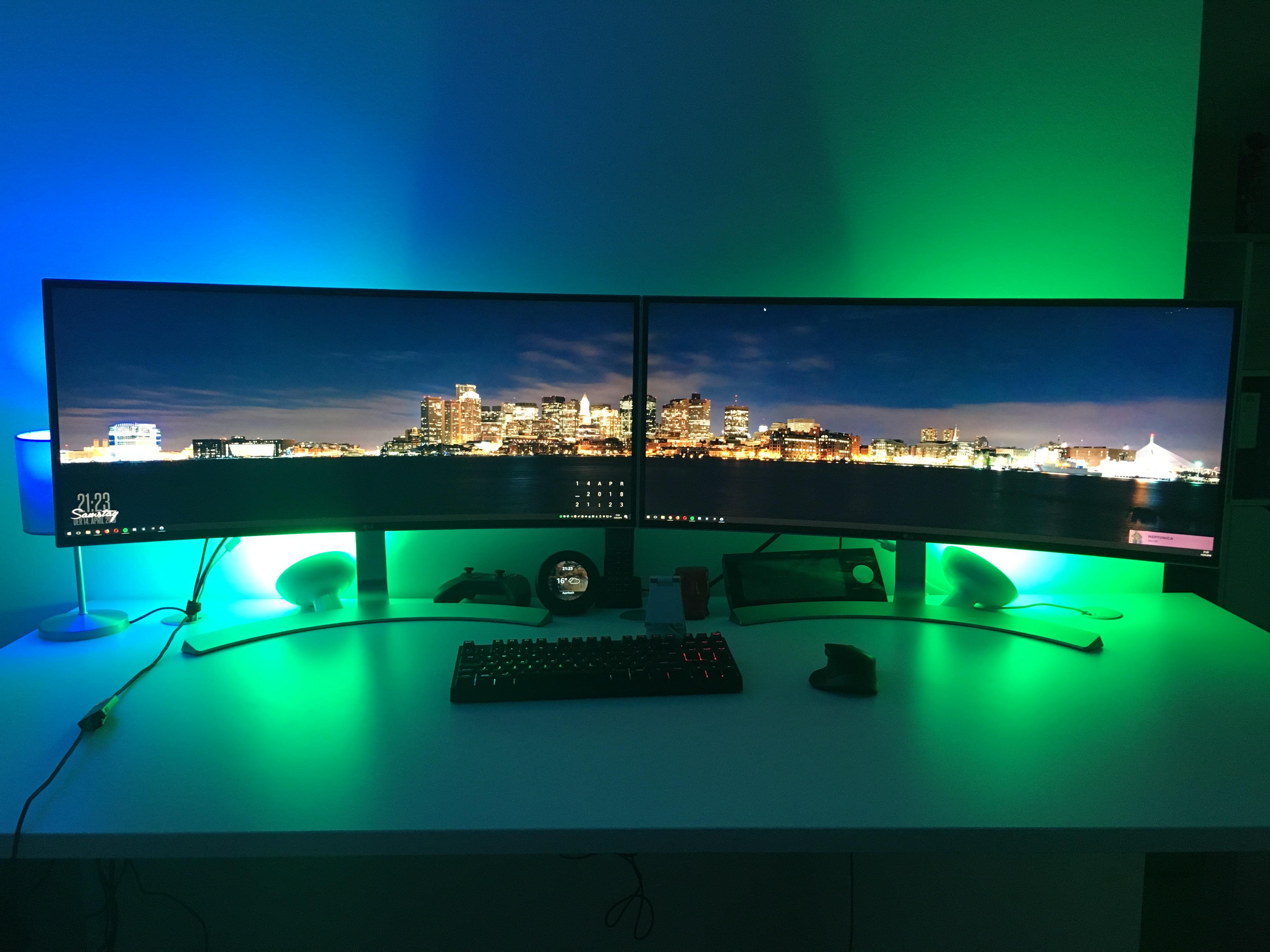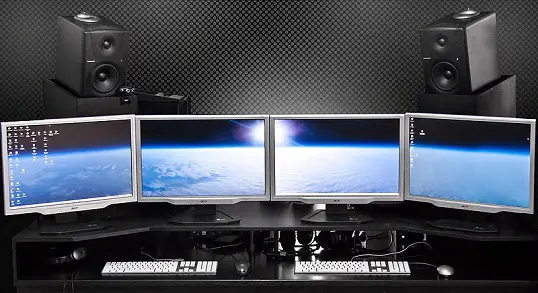

- #Multiple monitor displays serial
- #Multiple monitor displays drivers
- #Multiple monitor displays Pc
- #Multiple monitor displays series

#Multiple monitor displays Pc
Look out for it coming to a PC near you soon. It will even have 4Gbps free, making future expansion easier than ever. With 20Gbps throughput, it's more than able to support two 2,560 x 1,600 displays at 60Hz. Thunderbolt takes this standard and extends it to all external devices. DisplayPort does just that, extending PCIe to the display.
#Multiple monitor displays serial
PCI Express is an excellent high-speed serial bus, so it makes sense to use that as the basis for everything in the communication layer of the PC. It might have taken many years to shift the PC world from analogue VGA outputs to digital DVI - despite its limitations on resolution and single connection - but things are looking brighter.ĭisplayPort and Thunderbolt can provide daisy-chained multi-monitor capabilities, along with interoperability between the two, Thunderbolt, DisplayPort and PCIe are all interrelated in a natural, evolutionary way. Looking to the future, we're hoping it will become even easier to give systems multi-monitor capabilities. These features are on top of what Windows offers already, and do a fine job of handling as many monitors as you can throw at them. Going beyond three screens, the AMD Eyefinity system helps make multiple displays 'invisible' to applications by enabling you to group multiple monitors into a seemingly single display. The support of Nvidia and AMD is vital, and provides reassurance that multi-monitor setups can be made to work well. With a total screen resolution of 5,760 x 1,080, you can imagine why you'll need a high-end card to make the most of those IMAX-like displays. Part of the drive here is that both manufacturers are pushing triple-screen gaming as a key use for their high-end gaming cards.
#Multiple monitor displays drivers
Nvidia and AMD provide tools within their display drivers to help correct for the displays' bezels, which helps reduce the jarring effect of moving between displays. That's besides trying to physically align multiple bulky displays next to each other. The problem with multiple monitors is that often you're asking applications to work in an environment they were never designed for, and aren't expecting. The integrated GPU was disabled automatically, but let a system support up to four displays once activated. All of this is on top of PCI Express's ability to support multiple graphics cards, even from a 1x lane connector.ĭon't become obsessed with add-in cards though - integrated graphics on recent motherboard chipsets will happily work alongside these.īack in 2007, the AMD 690/780 chipsets that offered SurroundView often had to be enabled within the BIOS.

Interestingly AMD also offers the rather rarer Radeon HD 5870 Eyefinity 6, which has six physical DisplayPort outputs.
#Multiple monitor displays series
The latest high-end Nvidia 500 series and AMD 7/6000 range can drive four physical connections. The majority of cards still provide three, usually via DVI and either a DisplayPort or HDMI output. These days life is easier, as the DAC element can be dumped and replaced with TMDS, which handles the job of encoding the digital display data into a robust digital serial signal fit for shooting along cheap DVI and HDMI cables.ĭespite the size of DVI connectors, the switch from analogue to digital has enabled card manufacturers to gradually increase the number of video outputs on a single card from two up to six. Those were happy days - a RAMDAC generated the analogue VGA output, and multiple monitors could be supported by adding more. Now you know where the monitors will go, how will you connect them? Once upon a time, graphics cards could only drive a single display.


 0 kommentar(er)
0 kommentar(er)
